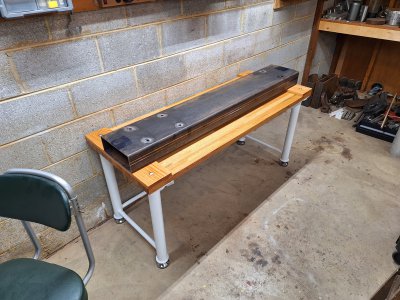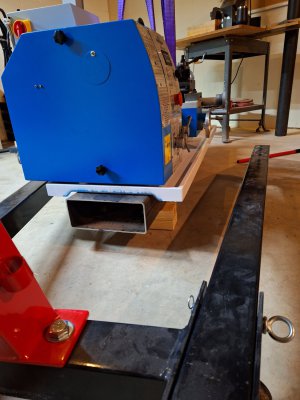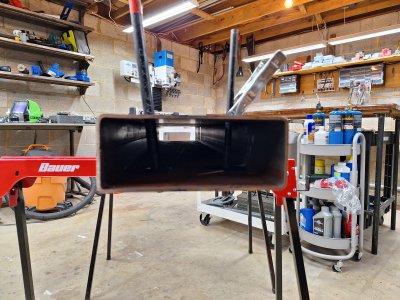- Joined
- Oct 2, 2020
- Messages
- 88
Travelling back to the house tomorrow, looking forward to finishing my lathe stand and it just clicked how difficult it will be to level the lathe on the stand I created.
Some have already seen pics of my WIP stand but it's basically a steel and wood table supporting a 5' grout filled beam that the lathe can be bolted to. Just looking at the profile of the tube you can see there is nothing truly square - one side is convex, the other concave, I'm sure the penetrators added some warpage during welding and it rests on wood glued and bolted to wood glued and bolted to pipe flanges...
The only thing I can think of is welding ground flat plate on the headstock and tailstock ends where the lathe feet will rest using a 6' level very carefully.
Attached some pics so you can get an idea of what's going on. Keep in mind the beam is now filled with grout.
Some have already seen pics of my WIP stand but it's basically a steel and wood table supporting a 5' grout filled beam that the lathe can be bolted to. Just looking at the profile of the tube you can see there is nothing truly square - one side is convex, the other concave, I'm sure the penetrators added some warpage during welding and it rests on wood glued and bolted to wood glued and bolted to pipe flanges...
The only thing I can think of is welding ground flat plate on the headstock and tailstock ends where the lathe feet will rest using a 6' level very carefully.
Attached some pics so you can get an idea of what's going on. Keep in mind the beam is now filled with grout.





